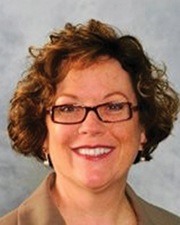Workplace flexibility into the future - By Melodee Wagen

Plenty has been written and speculated about the impacts of COVID19 on the office and we have all been inundated with theories about the future of the workplace, but one thing seems clear. It is possible, and acceptable, for a large portion of our workforce to be successful, functional, and productive in places other than the traditional office setting. Probably not all the time, not every person, and not every job – but a lot more than most people had thought. However, planning is critical now so that the trust that has been built out of necessity during an emergency evolves into policy, good practice, and improved communication. One note – this is primarily relevant to knowledge work and not necessarily applicable to business needs such as laboratories, manufacturing, and other types of work that do require a physical presence.
As many have said, we are already in the middle of a massive pilot study and we need to take action from what we’ve learned so far. There have been numerous surveys during the past few months that have evaluated the work from home experience: two to highlight are the Leesman Home Working Experience (based on their Leesman Index) and the IFMA Workplace Evolutionaries survey. The Leesman Home Working Experience has over 50K responses to date (beginning of August), and shows that 80.9% of respondents feel that they can work productively at home. Digging into the data a little further, however, employees relate that 71.1% are able to maintain a healthy work-life balance, and 66.6% feel connected to their colleagues. Given the suddenness of the switch to WFH, the lack of evaluation and training, and the full-time nature of this change, these results are encouraging. However, it points us directly to some areas that need more attention; given the ongoing nature of the pandemic, it is time to look for these potential areas of difficulty and act before things become a problem. A thoughtful approach now will encourage companies to support flexibility in the future.
The amount of time spent in each location, whether the traditional office or elsewhere, is something to be determined by each organization, each employee, each personal situation, and by the work required. Most recent surveys validate what workplace strategists have recommended for years – two to three days per week in each location seems to be ideal for most people, and employees have indicated a strong desire to continue working from home part-time even after things “return to normal.” A recent survey on LinkedIn, for example, with over 200,000 participants indicated that only 5% of the respondents wanted to work in the office five days per week.
Resiliency in so many areas is now a key focus, and talent resiliency is at the top of the list. Figuring out the specifics to support our employees will take new systems and processes, close coordination with business leadership, Employee Experience, Real Estate, HR, IT, Risk, and other key business areas. It will be a loss to our future flexibility if organizations fail to take charge.
Melodee Wagen, MCR, is the owner of Workspace Strategies, Inc., Boston, Mass.
Mount Vernon Co. acquires John Carver Inn & Spa in Plymouth, MA


Recently passed legislation creates opportunities to meet CT’s changing energy needs - by Klein and Feinn

Selecting the right façade installation firm - by Steven Powell


.png)





.png)
